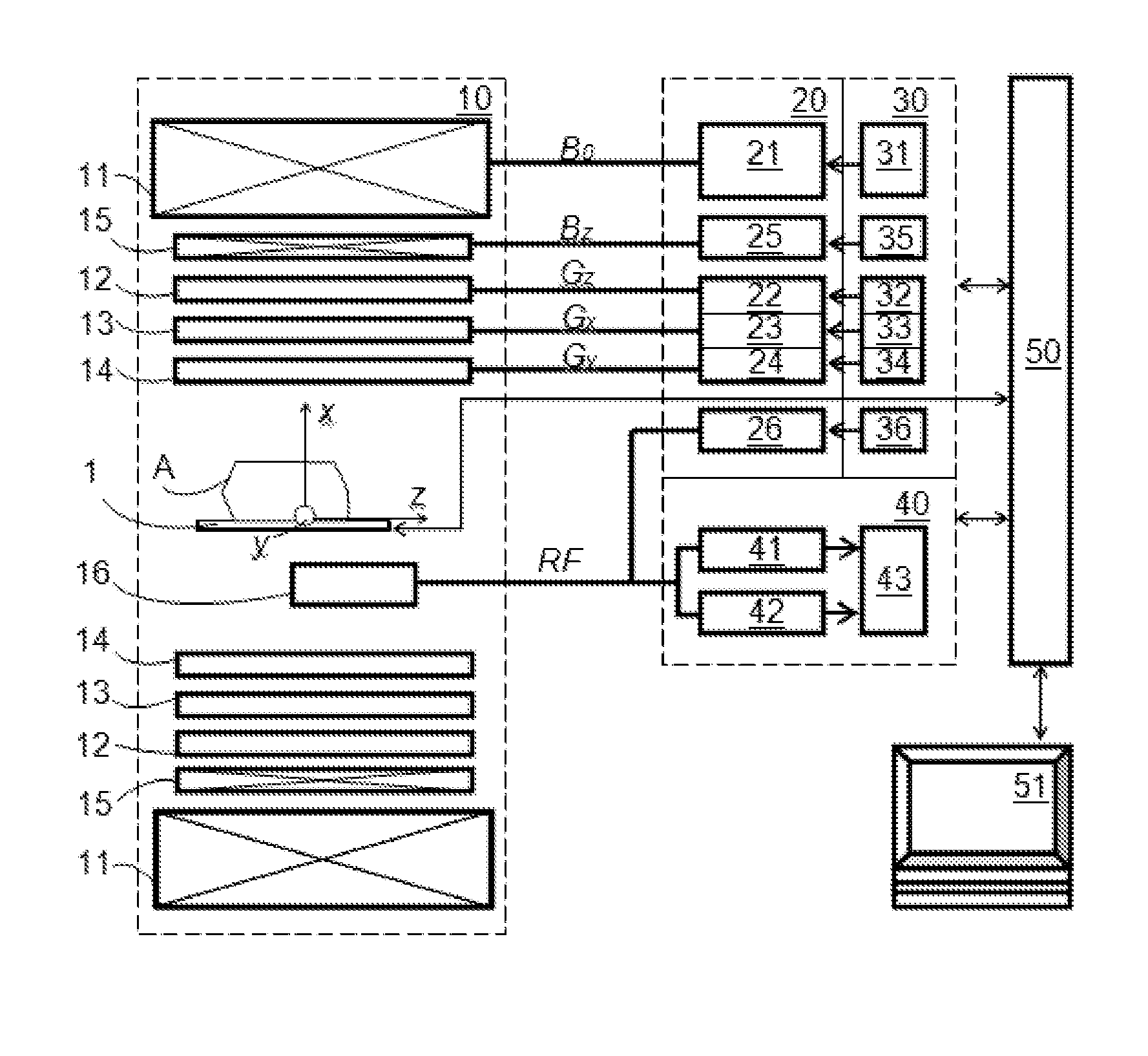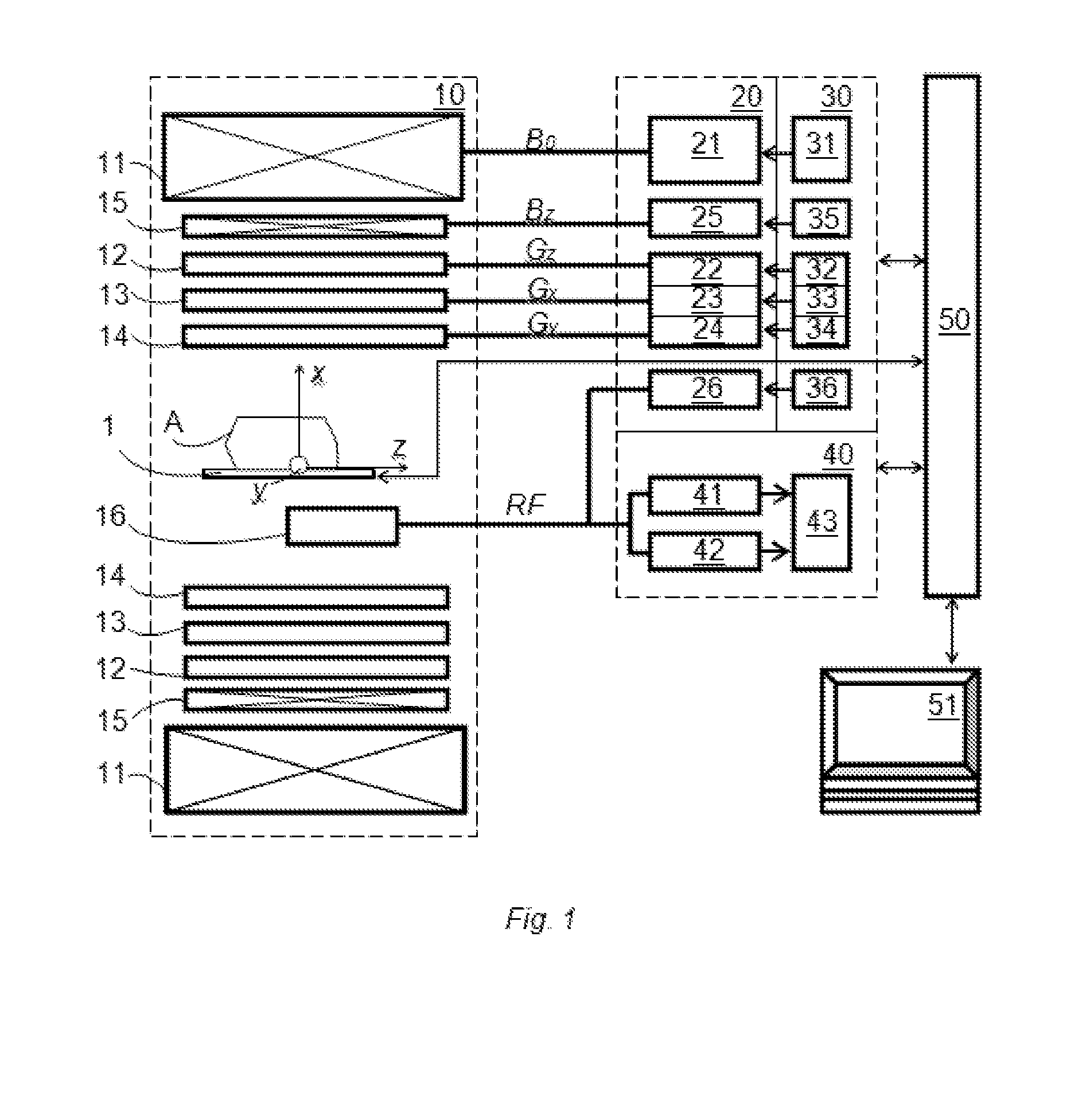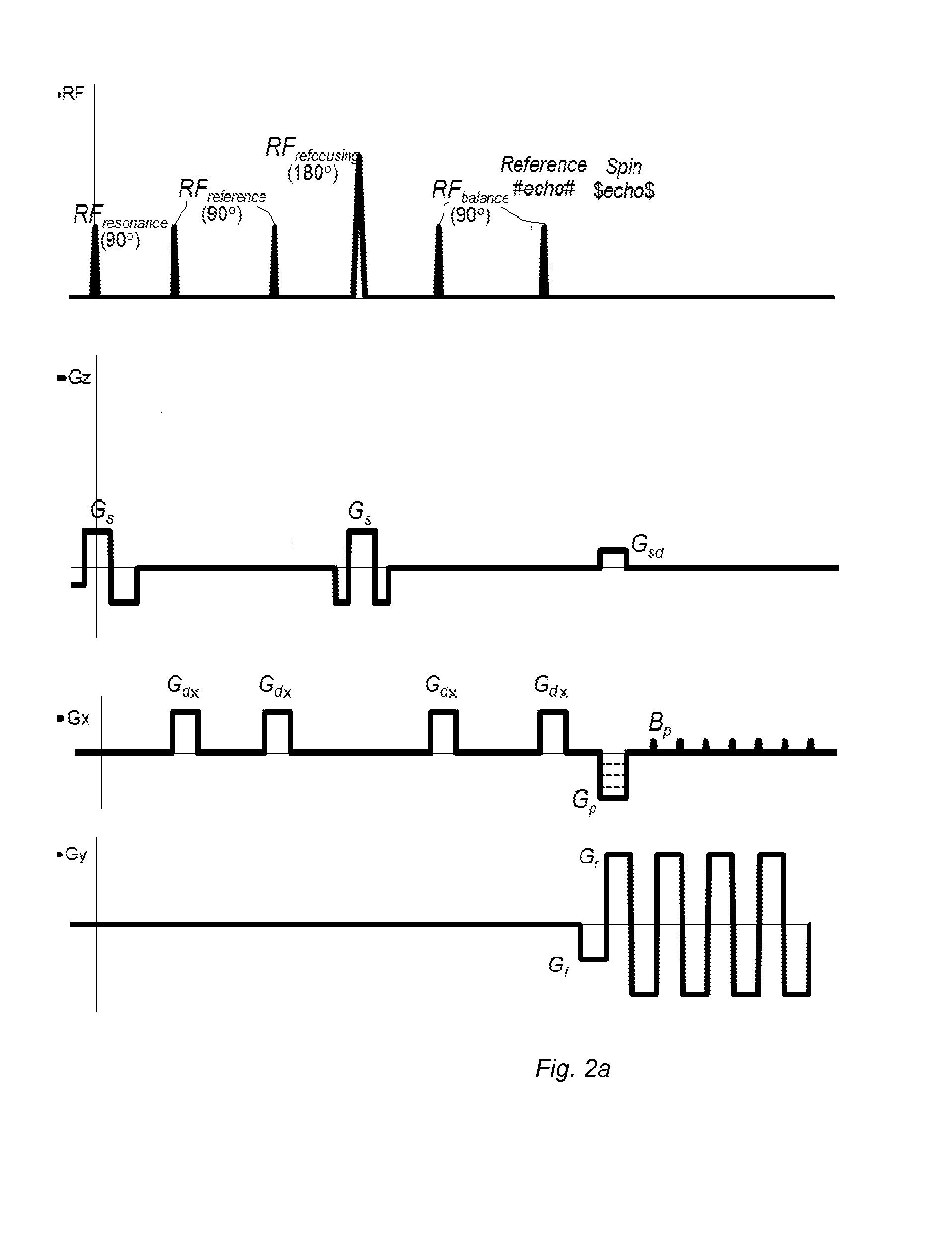Method and apparatus for magnetic resonance imaging
a magnetic resonance imaging and apparatus technology, applied in wave based measurement systems, instruments, reradiation, etc., can solve the problems of long acquisition time, large scan time cost, and large scan time cost, and achieve the effect of reducing diffusion-weighting sensitivity and decreasing scan tim
- Summary
- Abstract
- Description
- Claims
- Application Information
AI Technical Summary
Benefits of technology
Problems solved by technology
Method used
Image
Examples
Embodiment Construction
[0081]The advantages of the present invention may be more readily understood with reference to the following detailed description of the embodiments taken in conjunction with the accompanying drawings.
[0082]The DW-MRI method in accordance with the invention can be performed using a DW-MRI device as shown in FIG. 1. The DW-MRI device comprises a positioning system 1, a magnetic assembly unit 10, a power supply unit 20, system controls 30, a receiver unit (receiver) 40, a processor unit (computer) 50 having a periphery device 51. A subject (particularly patient) A is placed on a moving table of the patient positioning system 1 of the DW-MRI device, which is controlled by the computer 50.
[0083]The magnetic assembly unit 10 comprises a uniform magnetic coil means (a main magnetic coil set) 11 and controlled magnetic coil sets 12-15. The main magnetic coil set 11 is for generating a homogeneous longitudinal polarizing magnetic field B0 within an imaging volume within the subject A. Gradi...
PUM
 Login to View More
Login to View More Abstract
Description
Claims
Application Information
 Login to View More
Login to View More - R&D
- Intellectual Property
- Life Sciences
- Materials
- Tech Scout
- Unparalleled Data Quality
- Higher Quality Content
- 60% Fewer Hallucinations
Browse by: Latest US Patents, China's latest patents, Technical Efficacy Thesaurus, Application Domain, Technology Topic, Popular Technical Reports.
© 2025 PatSnap. All rights reserved.Legal|Privacy policy|Modern Slavery Act Transparency Statement|Sitemap|About US| Contact US: help@patsnap.com



